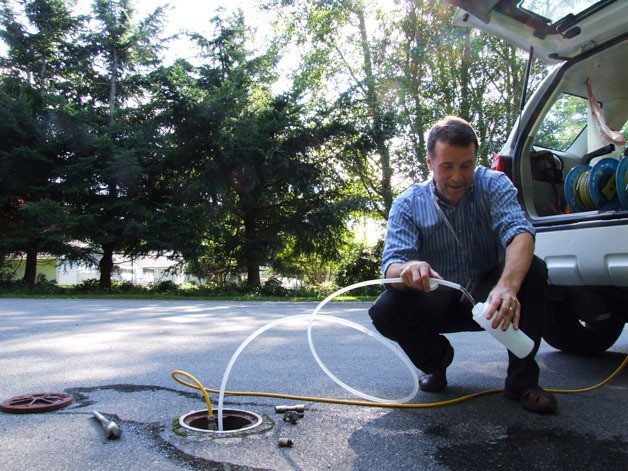A “watchdog” citizens board appointed by county commissioners gave a positive review last month of the controversial Clean Water Utility program.
Don Lee, chairman of the Water Resources Committee or WRAC, said that after the program’s first year, the 12-member citizens’ board was comfortable with how the money was being utilized.
“The money went where it was expected and everything seems to be going well,” Lee said Sept. 27.
Adopted in late 2010 by the Island County Board of Commissioners, the utility was created to address water quantity and quality concerns by generating revenue for surface and ground water programs.
The program collected $1.46 million in 2012 and is estimated to collect roughly $1.5 million each year moving forward, Lee said.
Critics have said that the roughly $40 that appears on property tax statements is a tax that was not approved by the citizens.
Commissioner Kelly Emerson, who opposed the measure from the beginning, said in a recent interview that she still believes there should not be a clean water utility program. However, she said that she was pleased to see that the collected funds were at least going toward water-related programs as promised.
Lee gave a report on behalf of the WRAC to the board at a Sept. 11 work session.
The county loaned the program $600,000 in 2011 to assist with startup costs, and the entire $600,000 was paid back to the county in 2012.
Moving forward, the utility is expected to pay $150,000 toward hydrology, which “actively measures and evaluates watersheds annually, evaluating data, and identifying pollution sources,” according to the report.
On-site sewerage is expected to cost $222,000 and surface water quality monitoring is budgeted for $230,000. Roughly $100,000 is set aside for code compliance and another $500,000 for capital projects, which would include the “installation and/or repair of large drainage projects outside of county right-of-way,” the report said.
The utility is required by the state to pay a tax on collected funds, which is estimated at $27,000.
“Overall the WRAC is satisfied that the CWU is proceeding as proposed by the commissioners, and valuable work in the best interests of the county is being accomplished,” according to the report.
As part of the report, Hydrologist Doug Kelly gave an overview of the county’s hydrology program in order to highlight one of the uses of the utility.
“WRAC wanted me to showcase something about what the utility was doing,” Kelly said in a Thursday interview.
In his presentation, Kelly explained the dangers of seawater intrusion into the island’s five main aquifers, and the importance of continued monitoring. As groundwater withdrawals are made, it reduces the ground pressure and increases the likelihood of seawater intrusion, Kelly said.
Part of what the utility pays for is enabling the county to maintain designated monitoring wells between Puget Sound and private wells, allowing them to detect any spikes in chlorides or pollution before they reach residents.
Clean Water Utility funds are utilized by three departments: Public Health performs the hydrology and surface water monitoring, Planning ensures code compliance, and Public Works completes any capital projects or construction.
Lee said WRAC requested utility financial reports from the three departments in December 2012, but it took a number of months for the county to deliver the data. This is why the report was not presented until September. However, it is Lee’s hope that now that they have completed the process once, the coming years will run more smoothly.
WRAC will be requesting 2013 utility data again in December.
Despite the controversy and the reporting delay, however, Lee said he’s pleased with the overall outcome.
“We did our job,” Lee said.



